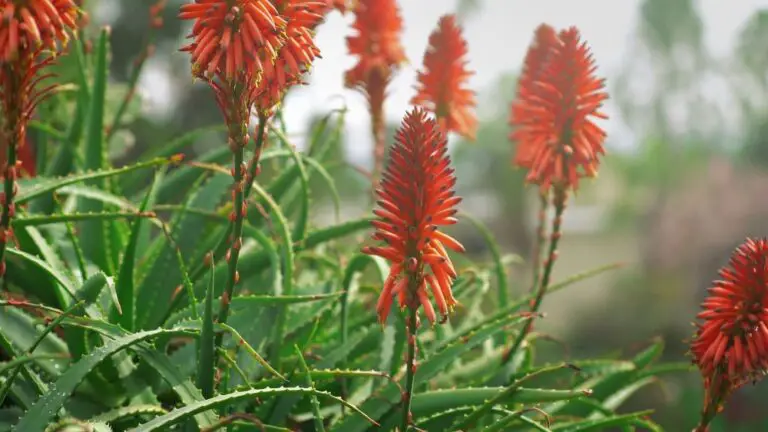51+ Types Of Echeveria: Gorgeous Succulents For Your Garden (With Pictures)
If you’re looking to add some succulent flair to your garden, Echeveria is an excellent choice. This genus boasts a staggering array of 51 different varieties, each with its unique characteristics and color palette. From pink to blue, purple to white, there’s an Echeveria to suit every taste. And the best part? They’re incredibly easy to care for, making them perfect for gardeners of all levels.
In this article, we’ll delve into the fascinating world of Echeveria, exploring its different types and features. Whether you’re a seasoned succulent enthusiast or just starting out, you won’t want to miss this comprehensive guide. Some of the most notable varieties include ‘Alta May’, ‘Atlantis’, ‘Black Knight’, ‘Blue Sky’, ‘Chroma’, and many more. Each has its own distinct charm and appeal, from the vibrant colors to the unique shapes and textures.
As we explore the world of Echeveria, you’ll discover just how easy it is to care for these lovely succulents. Whether you’re looking to add some color to your indoor space or create a stunning display outdoors, Echeveria has something for everyone.
Facts about Echeveria.
In the world of succulent plants, Echeveria is a notable genus within the Crassulaceae family. These plants hail from semi-desert regions of Central America, Mexico, and northwestern South America. One distinctive characteristic of Echeverias is their rosette shape, which can range in color from green to vibrant hues like pink, red, orange, or yellow.
These adaptable succulents have gained popularity as houseplants due to their low-maintenance requirements and ability to thrive with minimal water. For the more ambitious gardener, Echeverias can be propagated through leaf or offset reproduction, yielding new plants that may even produce stunning flowers.
Different Types of Echeveria
Echeveria ‘Alta May’.
The Alta May echeveria is a standout succulent native to Mexico, characterized by its two prominent leaves on either side of its body. These distinctive features give the plant its unique appearance. This hardy species can tolerate some cold weather, making it an excellent option for those living in colder climates. When grown in pots, the Alta May reaches a height of approximately 12 inches, making it an attractive choice for those seeking low-maintenance yet visually appealing plants.
Its ease of care makes it an ideal selection for beginner succulent growers who want to minimize attention and effort. The best approach to watering the Alta May is to allow the soil to dry out completely between waterings. This adaptable succulent can tolerate some neglect, making it a great fit for busy or forgetful individuals. Overall, the Alta May is an excellent choice for anyone seeking a beautiful, low-fuss plant that requires minimal care.
Echeveria ‘Atlantis’.
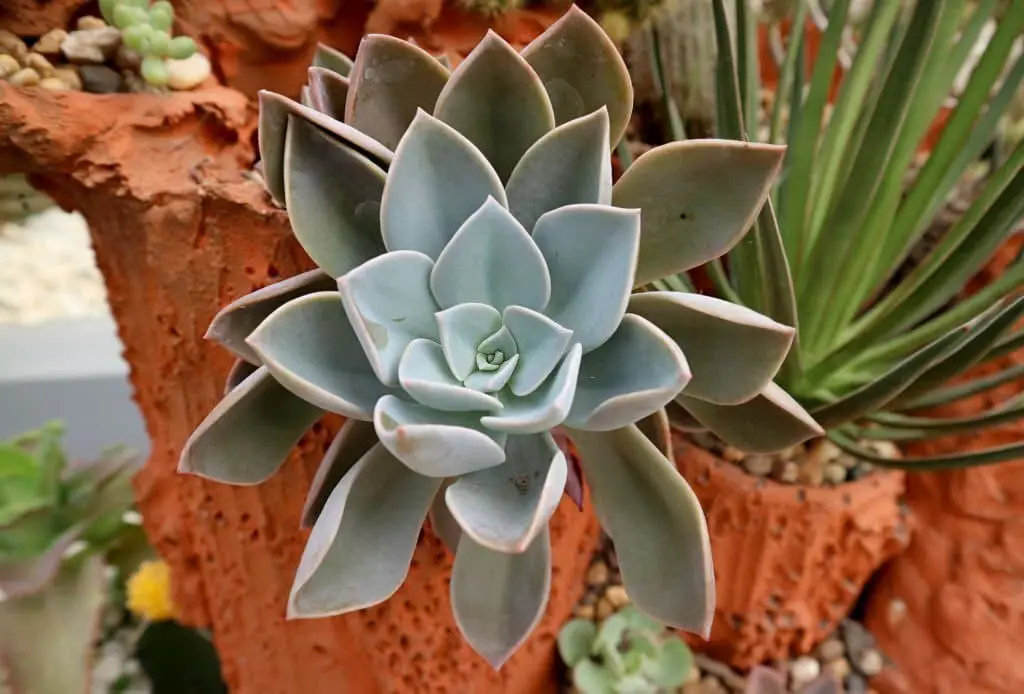
Echeveria ‘Atlantis’ is a stunning blue-green succulent with pink undertones, boasting thick, fleshy leaves that can form rosettes up to 12 inches in diameter. Native to Mexico, specifically the states of Hidalgo and Tamaulipas, this echeveria gets its name from the mythical island of Atlantis due to its striking blue-green hue.
Cultivating Echeveria ‘Atlantis’ is relatively straightforward. It thrives in bright, indirect light, though can tolerate some direct sunlight.
Watering and fertilization are crucial: wait until the soil feels dry to the touch before watering, and apply a balanced fertilizer once a month during the growing season.
As this succulent is not cold-hardy, it’s essential to bring it indoors or provide frost protection when winter arrives. Echeveria ‘Atlantis’ can be easily propagated through leaf cuttings or offsets. To achieve this, simply snip off a healthy leaf, allowing it to develop a callus over the next few days before replanting.
Echeveria ‘Black Knight’.

Indulge in the dark beauty of this succulent, known for its striking black leaves. While it thrives in bright, indirect light, it can still tolerate some direct sunlight. To ensure optimal health, water only when the soil feels dry to the touch and take care to drain any excess moisture. As it’s not frost-hardy, be sure to bring it indoors or provide protection during the colder months. This stunning succulent is a fantastic addition to any collection!
Echeveria ‘Blue Sky’.

Discover the breathtaking beauty of Echeveria ‘Blue Sky’, a drought-tolerant succulent that thrives in hot, dry conditions. Native to Mexico, this stunning variety boasts thick, fleshy leaves that store water, making it an ideal choice for those looking to add some low-maintenance flair to their collection. With its striking blue-green rosettes offsetting the plant’s subtle foliage, it’s no wonder ‘Blue Sky’ has become a fan favorite among succulent enthusiasts. And the best part?
It’s surprisingly easy to care for – simply provide bright, indirect light and well-draining soil, watering only when the soil feels dry to the touch.
Echeveria ‘Chroma’.
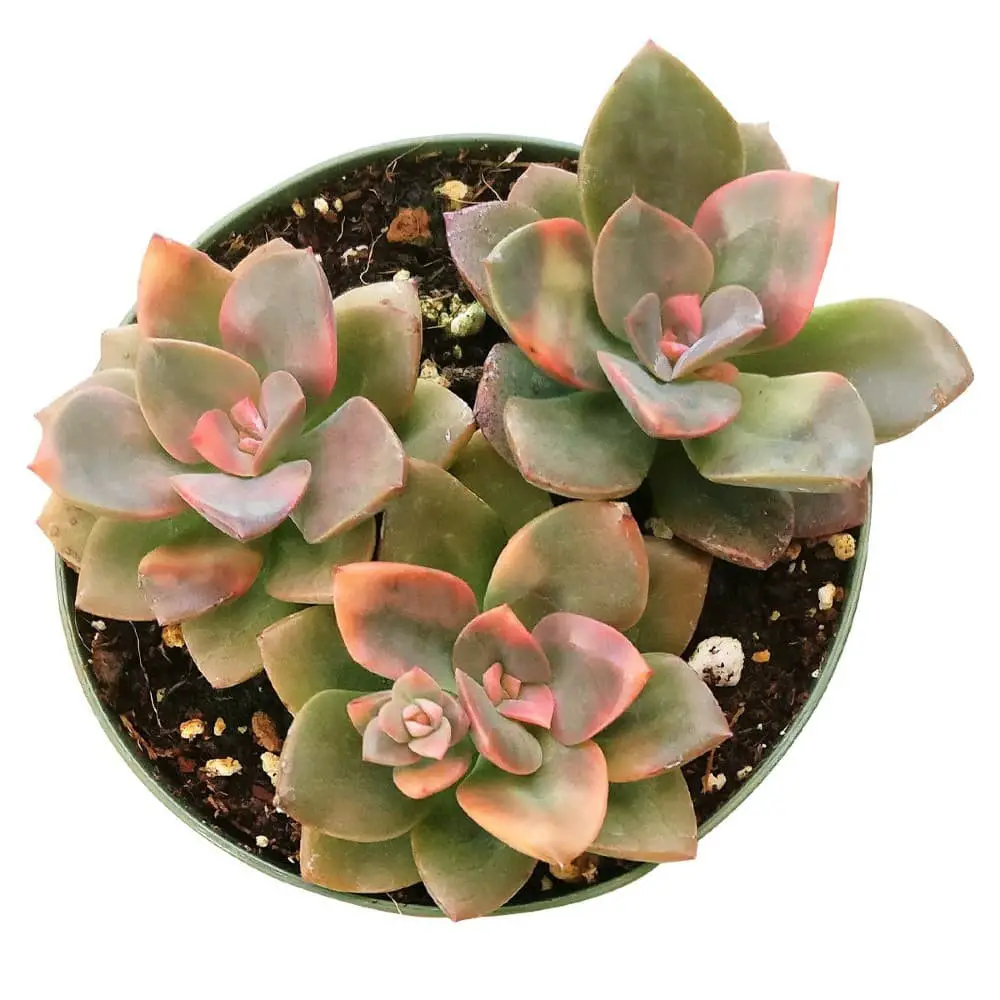
Echeveria ‘Chroma’ is a stunning succulent that originates from Mexico, belonging to the Crassulaceae family and sharing similarities with Echeveria ‘Lola’ and Echeveria ‘Perlita’. Its leaves boast a unique green hue with reddish tips and margins. When it blooms in the summer, the flowers are a vibrant pink, accentuated by bright yellow centers.
This versatile plant thrives in containers, rock gardens, or as a ground cover, making it an ideal choice for those who want low-maintenance landscaping. Its ability to withstand heat and drought conditions means minimal care is required, allowing you to simply sit back and enjoy the beauty this plant brings.
Echeveria ‘cubic frost’.
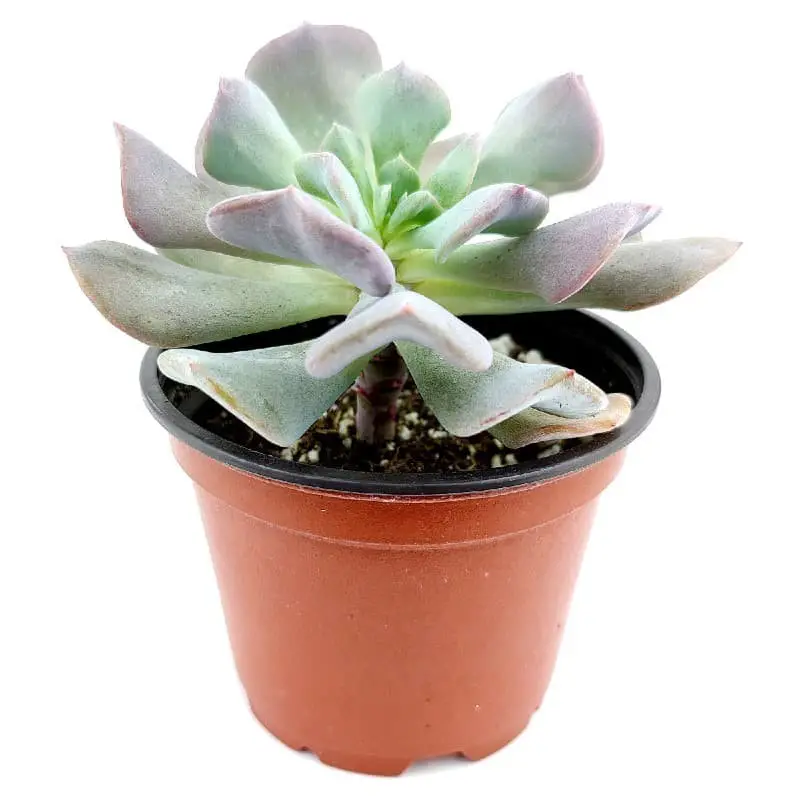
A stunning addition to any indoor space, Echeveria ‘Cubic Frost’ boasts mesmerizing blue-green leaves with a subtle frosting of white, arranged in a striking rosette pattern. This beautiful plant can grow up to 12 inches tall, making it an impressive focal point for any room. Originating from Mexico, this unique species is part of the Crassulaceae family and pays homage to Atanasio Echeverría y Godoy, a renowned Mexican botanist. Its exotic charm is sure to captivate anyone who lays eyes on it.
Echeveria ‘Ghost Buster’.
With its striking pale pink leaves adorned with red tips and a powdery coating giving it an ethereal appearance, Echeveria ‘Ghost Buster’ is a mesmerizing addition to any succulent collection. This low-growing beauty thrives in containers or as groundcover in well-planned succulent gardens, adding a splash of color and texture to the landscape.
As a relatively easy-to-care-for plant, it requires minimal maintenance: simply provide well-draining soil and bright, indirect sunlight, watering only when the soil feels dry to the touch and avoiding over-watering that can lead to root rot. Its unique appearance makes Echeveria ‘Ghost Buster’ an ideal choice for adding a touch of whimsy and drama to any garden.
Echeveria ‘Imbricata’.
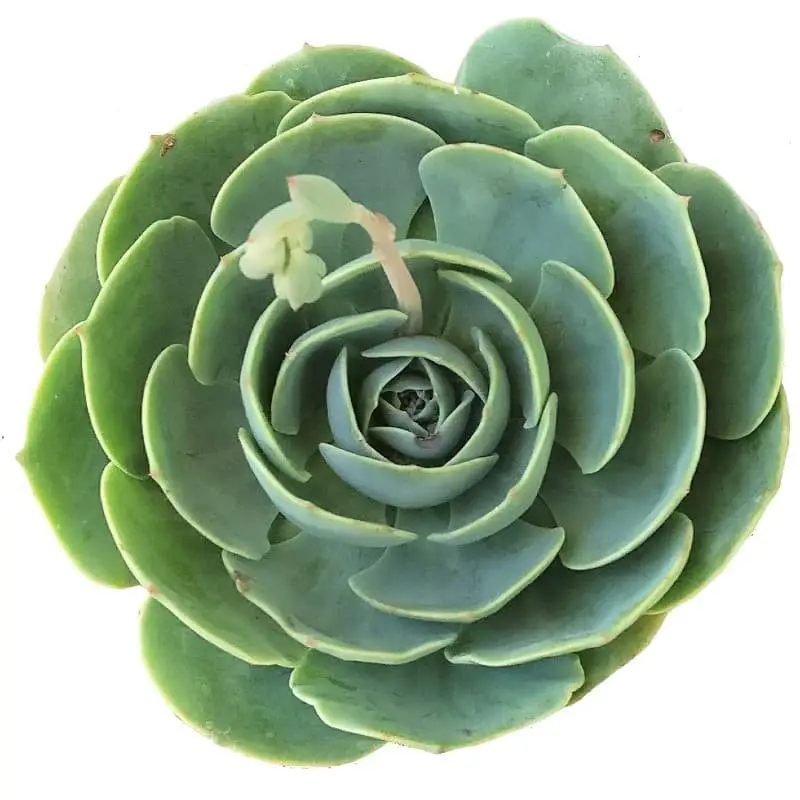
Among the numerous succulent species, Echeveria ‘Imbricata’ stands out with its unique characteristics. Hailing from Mexico, this plant is defined by its green leaves adorned with a waxy coating, giving it a subtle sheen. The blooms of Echeveria ‘Imbricata’ are a treat to behold, showcasing delicate pink or white hues that add a touch of elegance to the overall appearance. Reaching a height of 12 inches, this compact plant is perfect for indoor spaces or outdoor gardens with limited space.
When it comes to care and maintenance, Echeveria ‘Imbricata’ is remarkably low-maintenance. It thrives in environments where water is not plentiful, making it an ideal choice for busy gardeners or those prone to forgetfulness. Furthermore, the plant can be easily propagated through seeds or cuttings, allowing enthusiasts to share their love of this charming succulent with others.
Echeveria ‘Lola’.
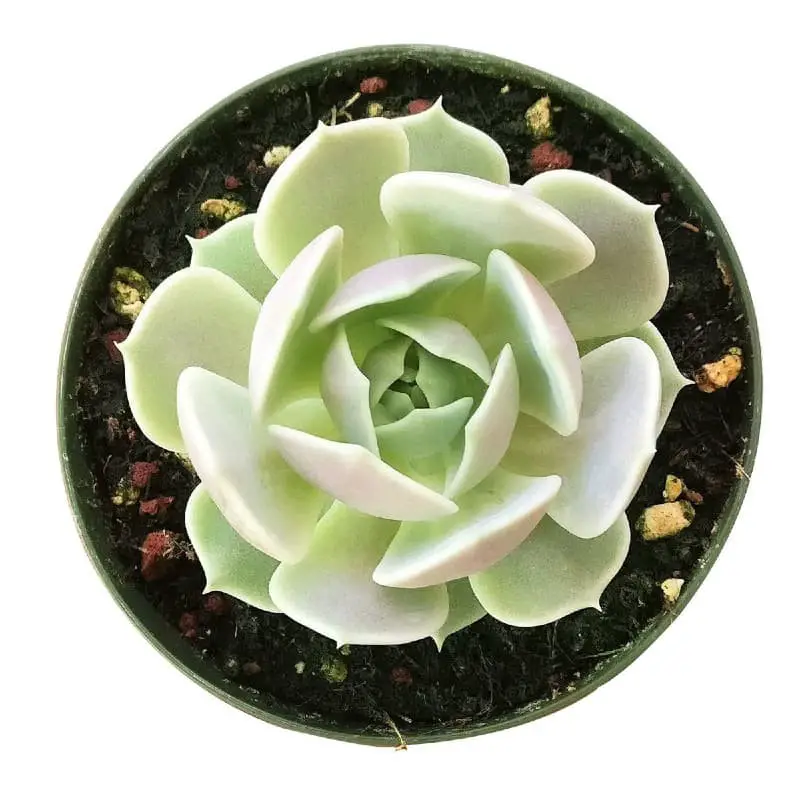
Meet the adorable echeveria that’s perfect for small spaces! This compact cutie grows up to four inches tall and six inches wide, making it ideal for shelves or tables. One of its charming features is its ability to produce lovely offsets, creating a lush clump over time. The leaves are a stunning pinkish-purple hue with subtle green undertones and delicate scalloped tips that deepen in color when exposed to direct sunlight.
In the spring and summer, this echeveria will surprise you with vibrant bell-shaped flowers in shades of orange and yellow, blooming on tall stems. For optimal growth, provide some afternoon shade if you live in a hot climate to prevent sunburn. This succulent is relatively unfussy about soil, as long as it drains well. To keep your plant happy, simply allow the soil to dry completely between waterings. Remove any unwanted offsets and enjoy the sweet company of this lovely little echeveria!
Echeveria ‘Melaco‘ (Brown rose succulent)
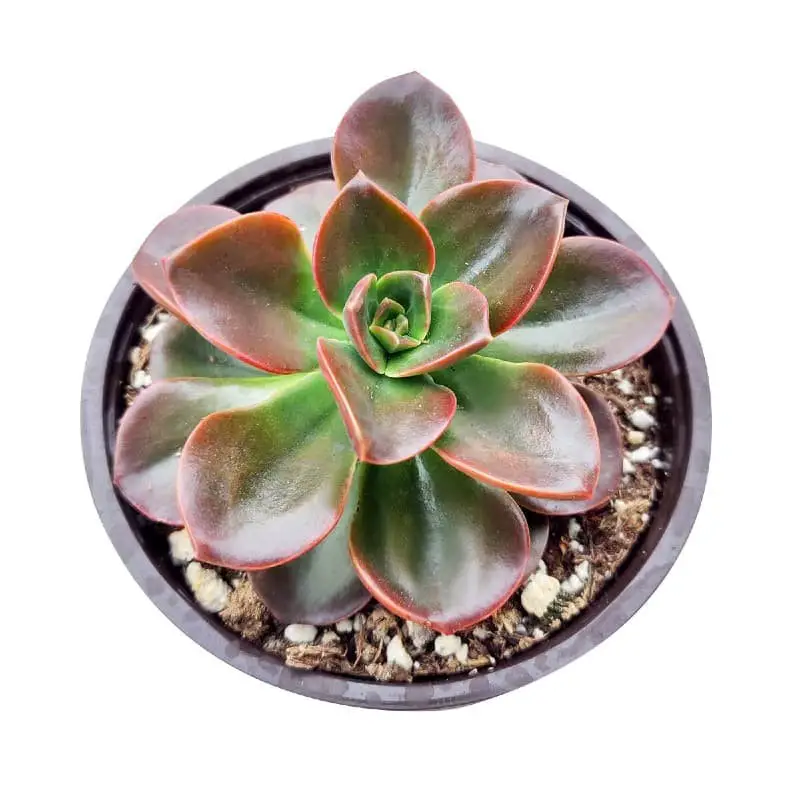
Discover the charm of Echeveria ‘Melaco’, a stunning succulent native to Mexico. Its thick, fleshy leaves boast a unique green-and-red hue, while vibrant pink blooms adorn the summer garden. This low-maintenance plant is perfect for beginners, as it’s surprisingly resilient and can thrive in neglect. To bring out its best features, provide bright light and well-drained soil. Water only when the soil feels dry to the touch, and fertilize during the growing season with a monthly boost.
Propagate Echeveria ‘Melaco’ using offsets or leaves, but be mindful of potential pests like mealybugs and aphids. With proper care, this beauty will flourish and provide years of colorful blooms.
Echeveria ‘Tsunami‘.
Echeveria ‘Tsunami’ is a stunning variegated cultivar that boasts striking green leaves edged in creamy hues. As summer arrives, vibrant pink blooms emerge, adding an extra layer of beauty to its already impressive appearance. This succulent’s unique charm makes it an ideal addition to any collection, perfect for those seeking a one-of-a-kind plant.
Moreover, Echeveria ‘Tsunami’ is an excellent choice for newcomers to the world of succulents, as it requires minimal attention and care, making it an effortless introduction to the art of succulent cultivation.
Echeveria ‘Violet Queen’.
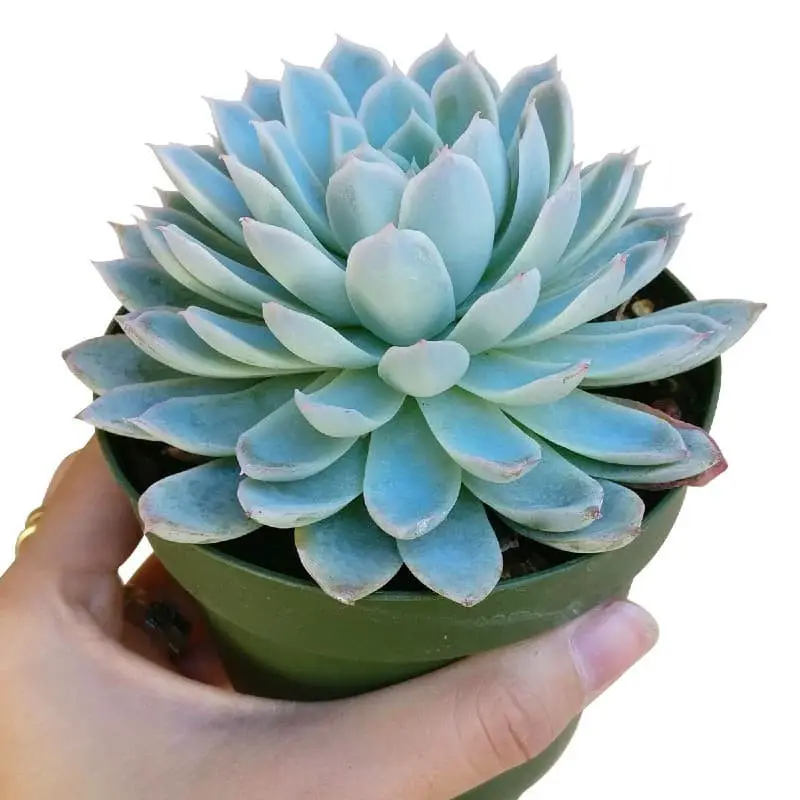
Echeveria ‘Violet Queen’ is a stunning succulent native to Mexico, boasting vibrant violet leaves that take center stage alongside its elegant white flowers. This show-stopping plant is perfect for injecting a pop of color into any succulent enthusiast’s collection.
With proper care, Echeveria ‘Violet Queen’ proves to be a relatively low-maintenance addition to any indoor space.
It thrives in bright, indirect light and well-draining soil, and its modest watering needs ensure that rot is kept at bay. In fact, this succulent’s greatest enemy is overwatering, which can quickly lead to leaf decay.
If you’re on the hunt for a one-of-a-kind succulent to add some personality to your space, look no further than Echeveria ‘Violet Queen’ – its unique charm and beauty are sure to win hearts.
Echeveria ‘White Rose’.
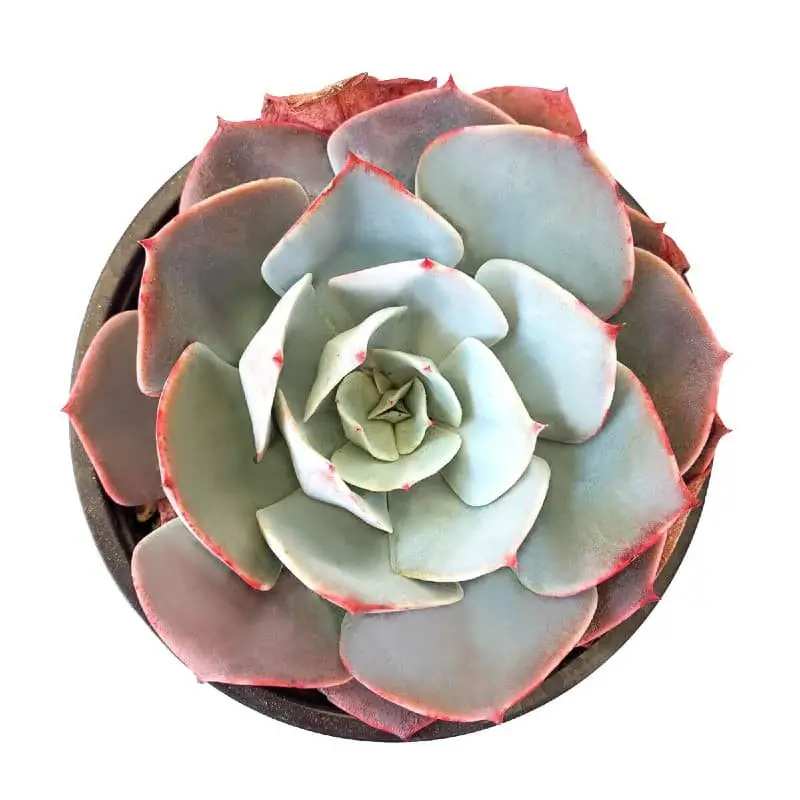
Discover the charm of Echeveria ‘White Rose’, a stunning succulent hailing from Mexico. Its slender, elongated leaves boast a striking green hue with white speckles, while its blooms unfold in a radiant white display during the summer months. As an added bonus for novice plant enthusiasts, this lovely species is remarkably low-maintenance, thriving on moderate watering and adapting well to arid environments – making it an ideal choice for those living in dry climates.
Echeveria ‘Afterglow’.
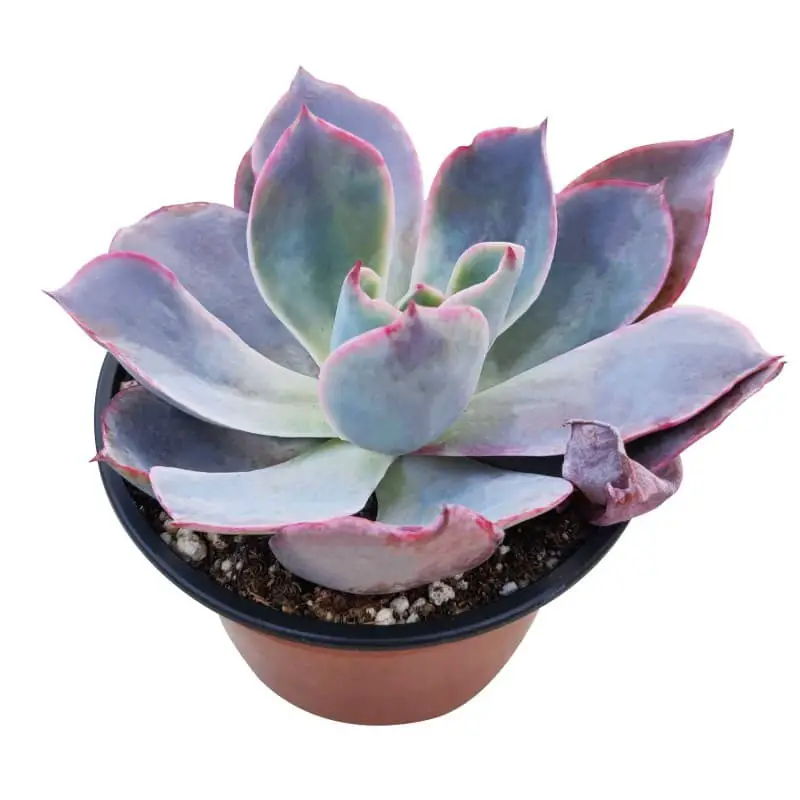
If you’re looking to bring a pop of color to your garden or indoor space, look no further than the stunning Echeveria ‘Afterglow’ succulent. Native to Mexico’s mountainous regions, this gorgeous specimen boasts vibrant pink and orange leaves that are sure to turn heads. One of its many charms is its low-maintenance care routine, requiring minimal watering and thriving in either full sun or partial shade.
With its ease of cultivation and striking appearance, Echeveria ‘Afterglow’ makes an excellent addition to any succulent collection.
Echeveria agavoides (Molded wax agave).
Echeveria agavoides, a stunning succulent, showcases its unique features through its slow growth pattern, forming rosettes of fleshy leaves that are a blend of green and white. The waxy coating on these leaves gives them a radiant appearance, as if polished to perfection. Native to Mexico, this plant can be found thriving in the wild on rocky hillsides. In gardens and homes alike, Echeveria agavoides is prized for its ornamental value.
As a member of the Crassulaceae family, which includes popular succulents like Sedum, Sempervivum, and Kalanchoe, Echeveria agavoides shares a common heritage with these plants. The Crassulaceae family itself has origins in Europe, Africa, and Asia. The species name ‘agavoides’ pays homage to the plant’s resemblance to the Agave. With its ease of care and adaptability to both indoor and outdoor environments, Echeveria agavoides is an attractive choice for succulent enthusiasts.
To thrive, this plant requires full sun to partial shade and well-draining soil. Watering should be done only when the soil feels dry to the touch. Additionally, Echeveria agavoides demonstrates a remarkable tolerance for temperature fluctuations and can even withstand brief periods of frost.
Echeveria agavoides ‘Lipstick’.
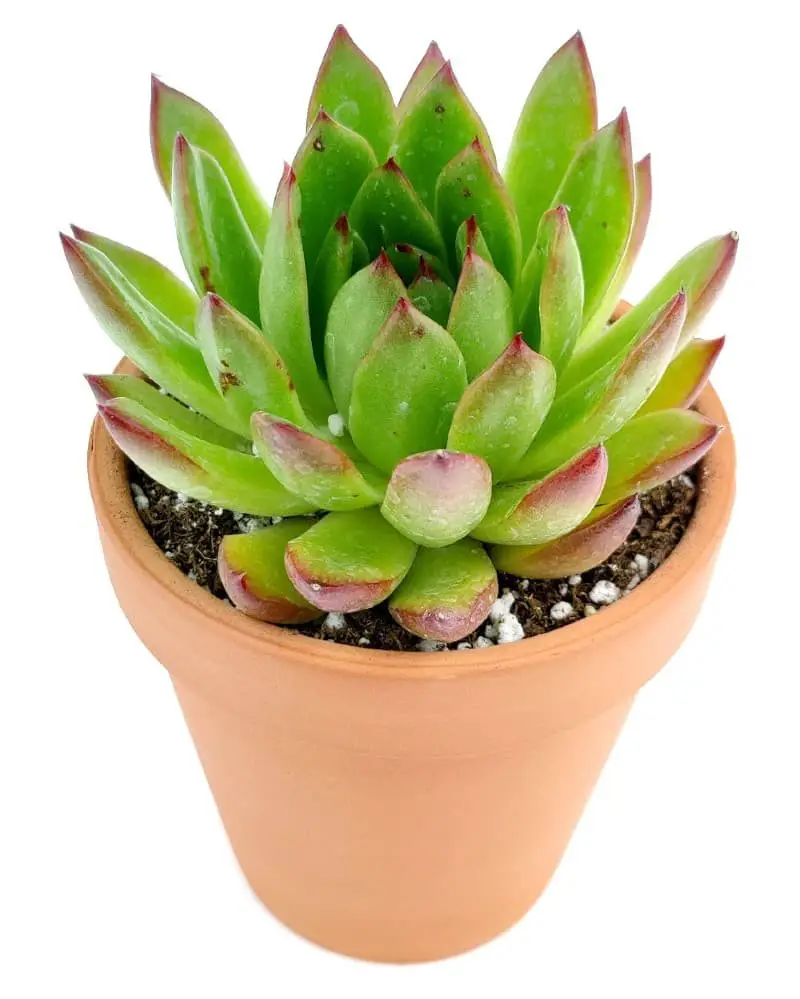
Discover the allure of Echeveria agavoides ‘Lipstick’, a stunning succulent native to Mexico and part of the Crassulaceae family. Its slender leaves, reminiscent of agave plants, give rise to its name. This striking plant reaches approximately 12 inches in height and width, showcasing vibrant pink flowers during the summer months. With its low-maintenance nature, ‘Lipstick’ is an ideal choice for succulent newcomers.
It thrives under bright, indirect light, tolerating some direct sun, but requires well-draining soil to prevent waterlogged conditions. Water only when the soil feels dry to the touch. As this succulent is not frost-hardy, be sure to either bring it indoors or provide protection from temperatures below freezing to ensure its survival.
Echeveria ‘Black Prince’ (Black Hens and Chicks).
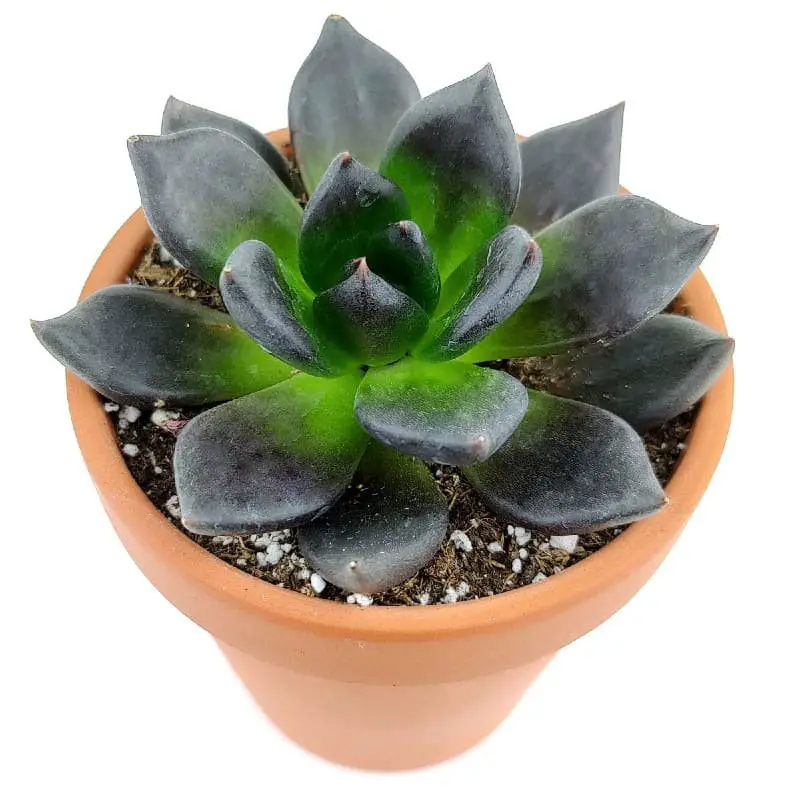
When it comes to succulents, Echeveria ‘Black Prince’ stands out with its unique rosettes of black leaves edged in red, topped off with a powdery coating. This slow-growing beauty hails from Mexico and can reach up to 12 inches in diameter, making it perfect for showcasing in containers, rock gardens, or as a striking groundcover. One of its greatest advantages is its ability to thrive in hot, dry conditions, requiring minimal watering.
But what really sets ‘Black Prince’ apart is its ease of propagation – simply take offsets or leaf cuttings and you’ll be rewarded with new plants in no time.
Echeveria ‘Blondie’.
Echeveria ‘Blondie’ is a stunning succulent ideal for new gardeners. Its unique characteristic lies in its wide, fleshy leaves with an intriguing blend of green, yellow, and pink hues, giving it an eye-catching appeal. The small, delicate flowers that bloom during the summer months add to its charm. This plant originates from Mexico, where it’s named after the town of Echeverria. The ‘Blondie’ cultivar was bred by American growers.
For those seeking a low-maintenance succulent that requires minimal upkeep, Echeveria ‘Blondie’ is an excellent choice.
Echeveria ‘Blue Curls’.
Echeveria ‘Blue Curls’ boasts an alluring appearance, with its blue-green leaves curled at the tips and covered in a white powdery coating known as farina. Native to Mexico, this succulent can be spotted growing wild on rocky outcroppings. Its rugged terrain is a testament to its hardiness, allowing it to thrive under conditions that would prove challenging for many other plants.
Despite its adaptability, Echeveria ‘Blue Curls’ remains relatively low-maintenance, requiring minimal watering and tolerating drought with ease. In fact, its leaves can grow up to 12 inches in length, a testament to its robust health. This versatile succulent can be propagated through both stem cuttings and leaf cuttings, making it an attractive option for gardeners of all skill levels.
Echeveria ‘Cante’.
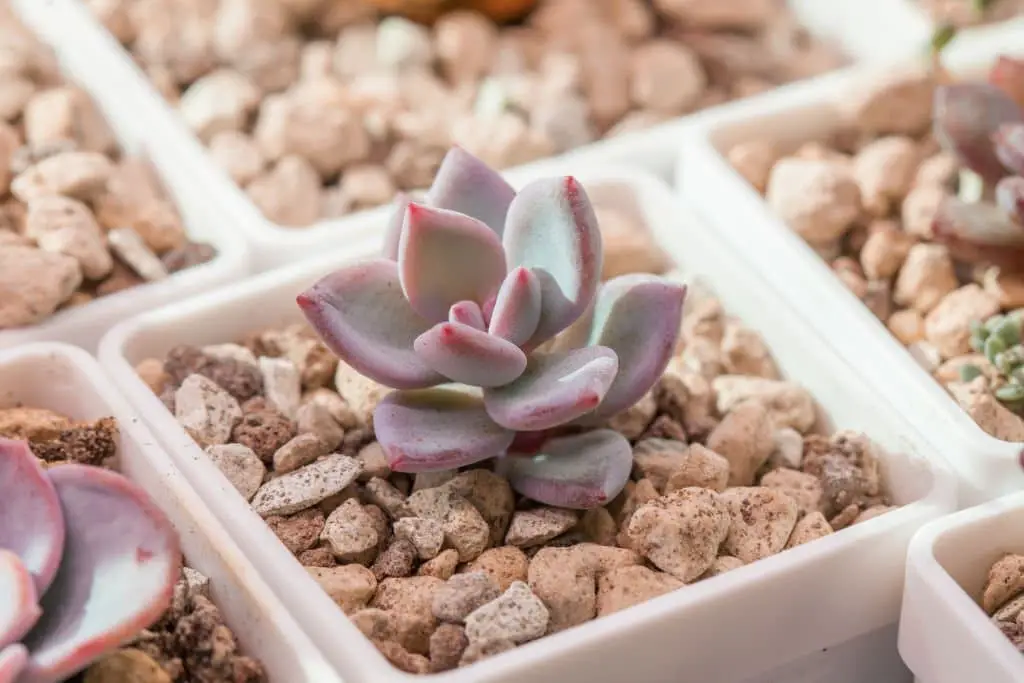
Echeveria ‘Cante’ is a stunning succulent that hails from Mexico, belonging to the Crassulaceae family alongside its close relative Echeveria ‘Lola’. The name ‘Echeveria’ pays homage to Atanasio Echeverria y Godoy, a notable Mexican botanist. This charming plant boasts lovely light pink blooms in the summer months, while its bluish-green leaves feature a waxy coating and subtle scalloping.
Reaching approximately four inches in length, these leaves add an attractive touch to any succulent arrangement. As an added bonus, Echeveria ‘Cante’ is surprisingly low-maintenance. It thrives in full sun but can also tolerate partial shade, making it adaptable to a range of environments. Moreover, this succulent is remarkably drought-tolerant and doesn’t require frequent watering. In fact, allowing the soil to dry out completely between waterings is crucial for its well-being.
Echeveria ‘Cante’ is an excellent choice for both novice and seasoned growers alike, making it a beautiful addition to any succulent collection.
Echeveria chihuahuaensis (Cat’s Claw).
Echeveria chihuahuaensis is a stunning succulent that offers a vibrant splash of color for any gardener’s collection. Its slender leaves, tinged with green and featuring bright red tips, provide a striking visual appeal. The small, white blooms that emerge during the summertime add an extra layer of charm to this already captivating plant.
As its name suggests, Echeveria chihuahuaensis hails from Mexico, specifically the state of Chihuahua where it can be found in abundance.
Fortunately, this succulent is relatively easy to care for and can thrive in a wide range of conditions. However, one important consideration is to avoid overwatering, as Echeveria chihuahuaensis does not tolerate excessive moisture. Instead, water sparingly to ensure the plant receives just the right amount of hydration.
Echeveria ‘Cobra’.
In its natural habitat, Mexico, Echeveria ‘Cobra’ is a thriving succulent with striking features. Its long, slender leaves boast a unique combination of green and red hues, earning its name from the serpentine shape they take on. Reaching up to 12 inches in height and spreading outwards by up to 24 inches, this plant is an attractive addition to any indoor or outdoor space.
With its low-maintenance requirements, Echeveria ‘Cobra’ makes a fantastic choice for novice gardeners, allowing them to focus on the joys of propagation and care rather than constant upkeep.
To keep your Echeveria ‘Cobra’ thriving, provide it with moderate watering – about once a week – and plenty of direct sunlight. A well-draining potting mix is essential for this succulent’s health, so ensure you’re using a high-quality soil that will help prevent waterlogged roots.
For those living in areas with harsh winter conditions, Echeveria ‘Cobra’ will need to be brought indoors during the colder months to protect it from damage. And when the time comes to multiply your succulent, propagation is surprisingly easy – simply snip off a leaf, allow it to form a callus for a few days, and then plant it in well-draining soil, keeping the soil consistently moist until roots develop.
Echeveria colorata.

Echeveria colorata, a stunning succulent, boasts vibrant foliage that showcases its natural beauty. Native to Mexico, this charismatic plant thrives in various parts of the country, where it can be found displaying its unique rosette shape and variegated leaves featuring hues of green, red, pink, and purple.
As a popular choice for succulent enthusiasts, Echeveria colorata makes an excellent addition to any garden or indoor space.
With its low-maintenance requirements, this plant is ideal for those new to succulent cultivation.
In terms of care, Echeveria colorata is surprisingly easy-going. It tolerates partial shade but prefers basking in full sun. As it’s naturally drought-resistant, the plant doesn’t require frequent watering – simply ensure the soil drains well and allow it to dry slightly between hydration sessions.
However, it’s essential to provide protection from frost, as Echeveria colorata is not hardy against cold temperatures.
Echeveria ‘Crinkles’.
Echeveria ‘Crinkles’ is a captivating cultivar of the genus Echeveria, originating from Mexico. Its leaves boast a unique crinkled texture and are covered in a powdery coating, while its bright yellow bell-shaped flowers add a pop of color to any space. This succulent’s adaptability has made it a favorite among terrarium enthusiasts and dish garden creators alike, as it thrives with minimal watering requirements.
Furthermore, Echeveria ‘Crinkles’ brings an undeniable visual appeal to any garden, providing a welcome respite from the norm. If you’re seeking a low-maintenance yet visually striking addition to your green space, then Echeveria ‘Crinkles’ is undoubtedly worth considering.
Echeveria ‘Curly Locks’.
Echeveria ‘Curly Locks’ is a stunning succulent that hails from Mexico, where it thrives as part of the Crassulaceae family. This lovely species shares a familial bond with other Echeveria varieties. Its characteristic feature is its fleshy leaves, which boast a vibrant green hue with reddish accents. These leaves are organized in a harmonious rosette pattern, capable of reaching up to 12 inches in diameter. When summer arrives, the plant rewards us with diminutive yellow blooms.
What’s more, ‘Curly Locks’ is an incredibly resilient succulent that can withstand drought conditions without requiring excessive watering. In fact, it makes for a fantastic introduction to the world of succulents, making it an accessible choice even for novice gardeners.
Echeveria derenbergii (Painted Lady).
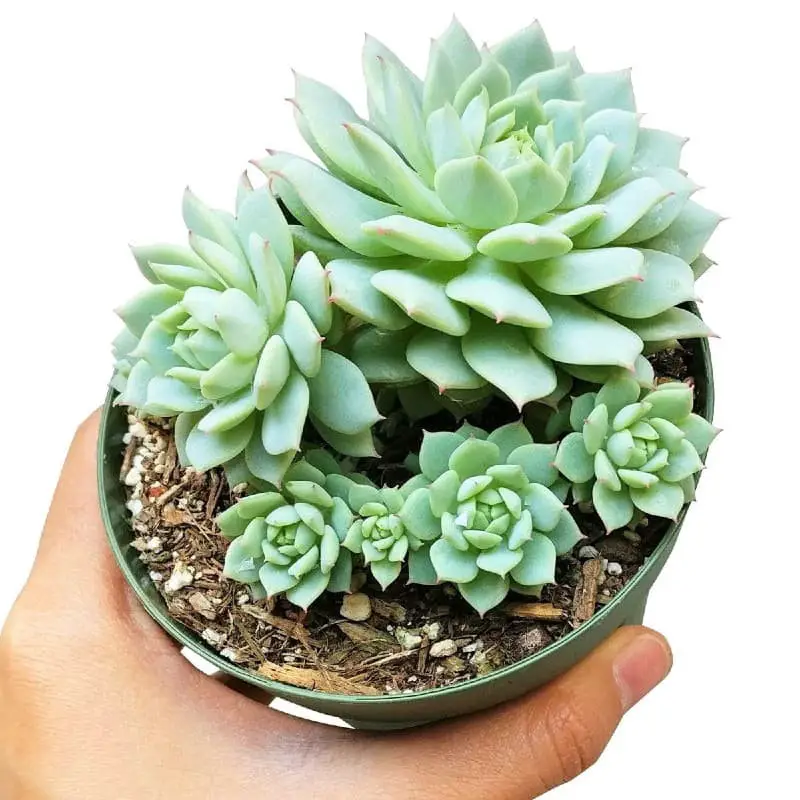
Echeveria derenbergii, a stunning succulent species from Mexico’s Crassulaceae family, boasts an impressive presence as an evergreen perennial that reaches 30 cm in height and 60 cm in width. Its fleshy leaves, characterized by a striking blue-green hue with pink margins, are a sight to behold. When the summer season arrives, this succulent rewards us with vibrant pink blooms on erect stems.
Despite its exotic origins, Echeveria derenbergii is surprisingly easy to cultivate and maintain, making it an ideal choice for those new to plant parenthood. Moreover, its adaptability allows it to thrive in a broad range of conditions, and even indoors if desired.
Echeveria ‘Doris Taylor’ (Woolly Rose).
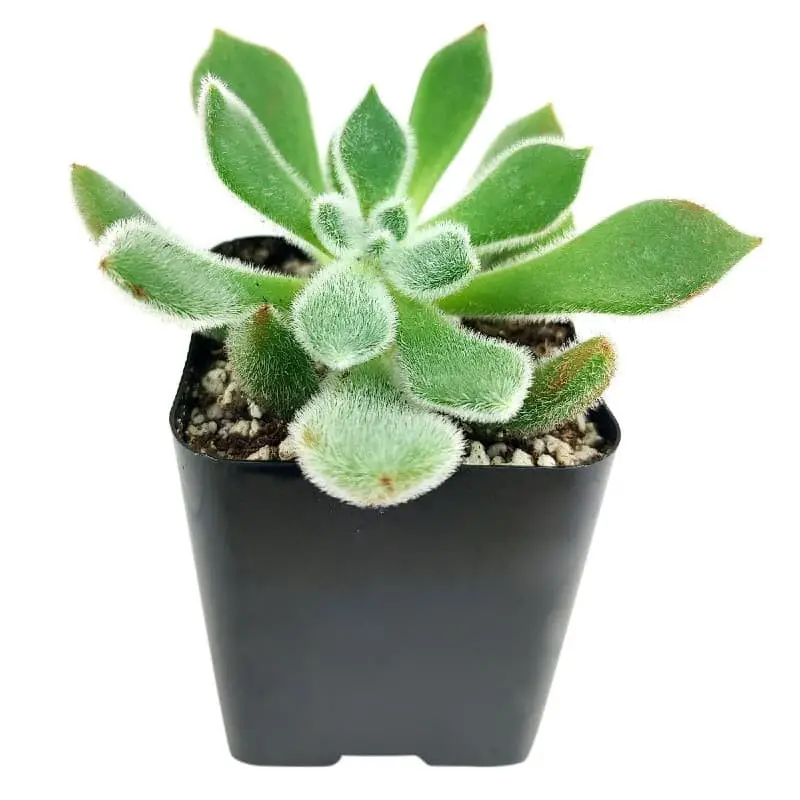
Echeveria ‘Doris Taylor’ is the result of a deliberate breeding effort by German grower Karl-Heinz Wagner, who crossed Echeveria ‘Perle von Nurnberg’ with an unknown species of Echeveria in the late 1970s. This unique hybrid boasts bluish-green leaves adorned with a powdery coating that gives them a distinctive woolly appearance. When spring arrives, vibrant pink flowers emerge, adding a pop of color to this already eye-catching plant.
As a slow-growing variety, ‘Doris Taylor’ typically reaches heights of up to 30 cm when mature, making it well-suited for container cultivation where its compact growth habit can be fully appreciated.
Echeveria ‘Dusty Rose’.
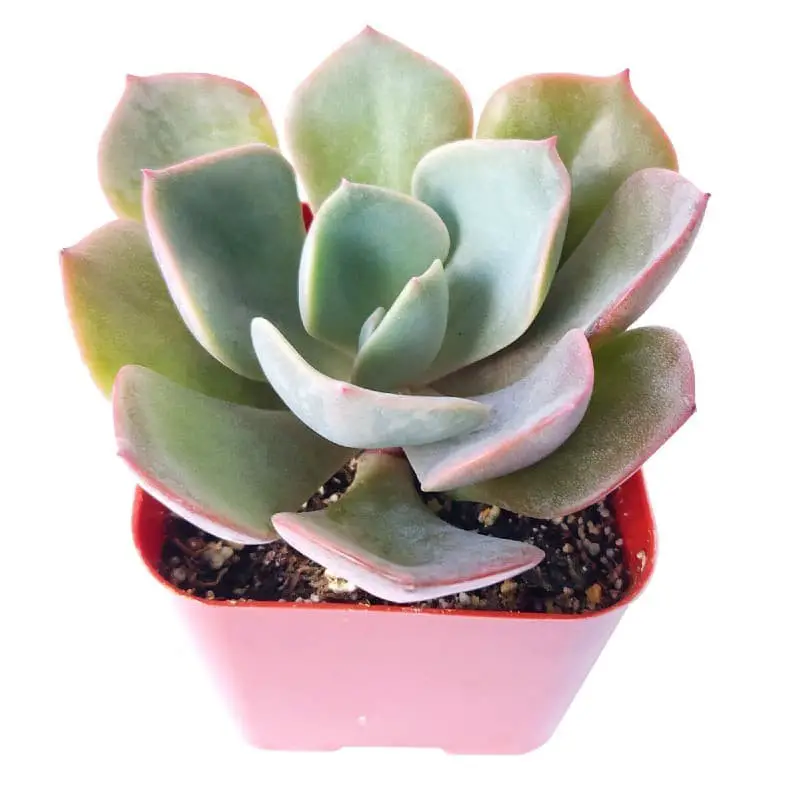
Indulge in the beauty of Echeveria ‘Dusty Rose’, a stunning succulent native to Mexico, characterized by its delicate pink blooms and compact growth habit reaching up to 12 inches tall. This adaptable and low-fuss addition to your plant collection is ideal for those seeking a hassle-free yet visually striking companion.
Echeveria elegans (Mexican Snowball, Hens and Chicks).
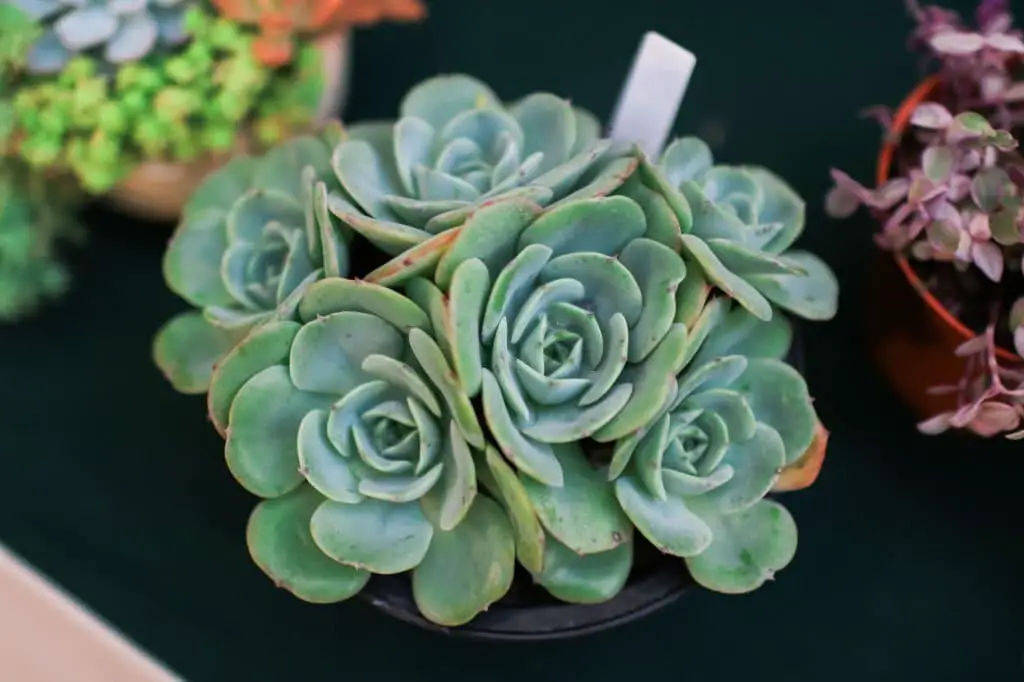
Echeveria elegans, a stunning succulent native to Mexico, belongs to the Crassulaceae family, sharing similarities with Echeveria gibbiflora. Its rosette shape can reach up to 30 cm in diameter, boasting leaves with a waxy surface and striking green coloration featuring white spots. As the seasons change, delicate pink or white flowers emerge in the springtime, adding to the plant’s allure.
A popular choice for succulent enthusiasts and houseplants alike, Echeveria elegans thrives in well-draining soil and full sun to partial shade. With its natural drought tolerance, this beauty is low maintenance; however, it does require protection from frost and cold temperatures.
Echeveria funkii.
In the lush landscapes of Mexico, Echeveria funkii thrives as a stunning succulent with an unmistakable appearance. Its elongated leaves boast a striking combination of green and red hues, while its vibrant yellow blooms burst forth in the springtime. This charming plant is not only visually appealing but also surprisingly low-maintenance, making it an ideal choice for both indoor and outdoor enthusiasts alike.
Whether you’re a seasoned succulent gardener or just starting out, Echeveria funkii is a fantastic option that requires minimal watering and care.
Echeveria glauca (The Blue Hens and Chicks)
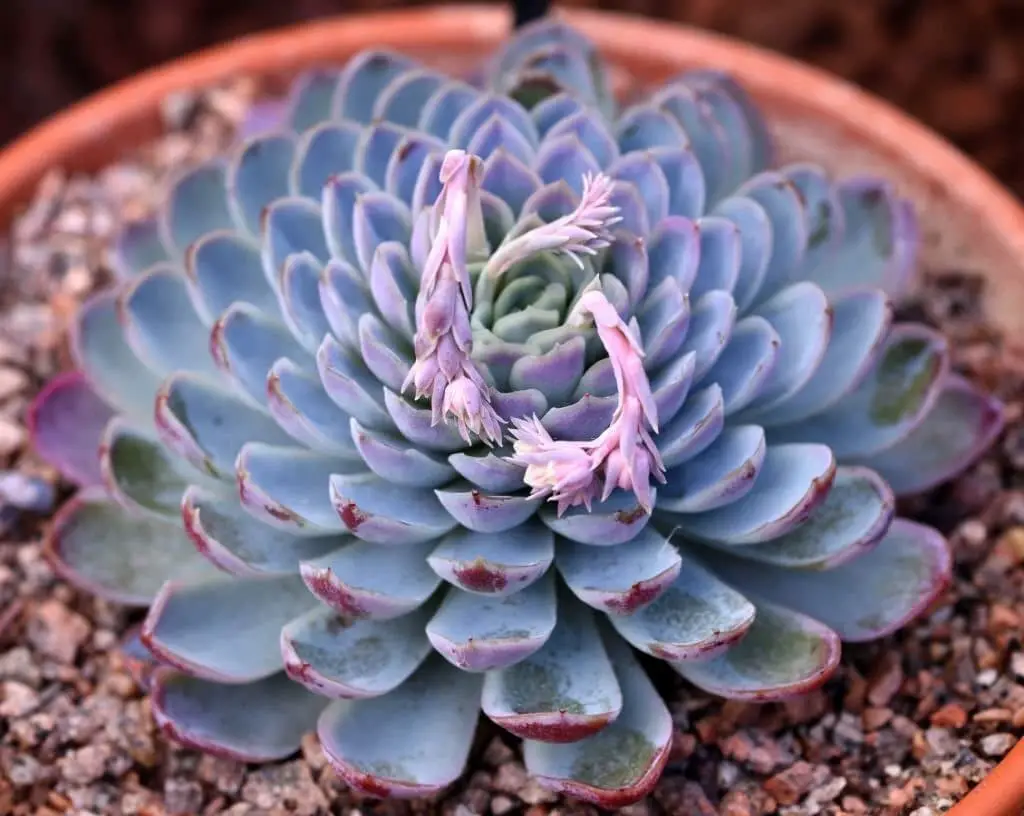
Echeveria glauca is a succulent species native to Central America’s semi-desert regions. Its name pays tribute to Atanasio Echeverría y Godoy, a renowned Mexican botanical artist. The epithet ‘glauca’ translates to ‘bluish-green’, a fitting description of the plant’s striking foliage. As a member of the Crassulaceae family, this succulent boasts thick, fleshy leaves that store water, arranged in a rosette pattern and capable of growing up to eight inches in diameter.
Springtime brings small, bright yellow blooms to the plant.
Echeveria harmsii (Plush Plant).
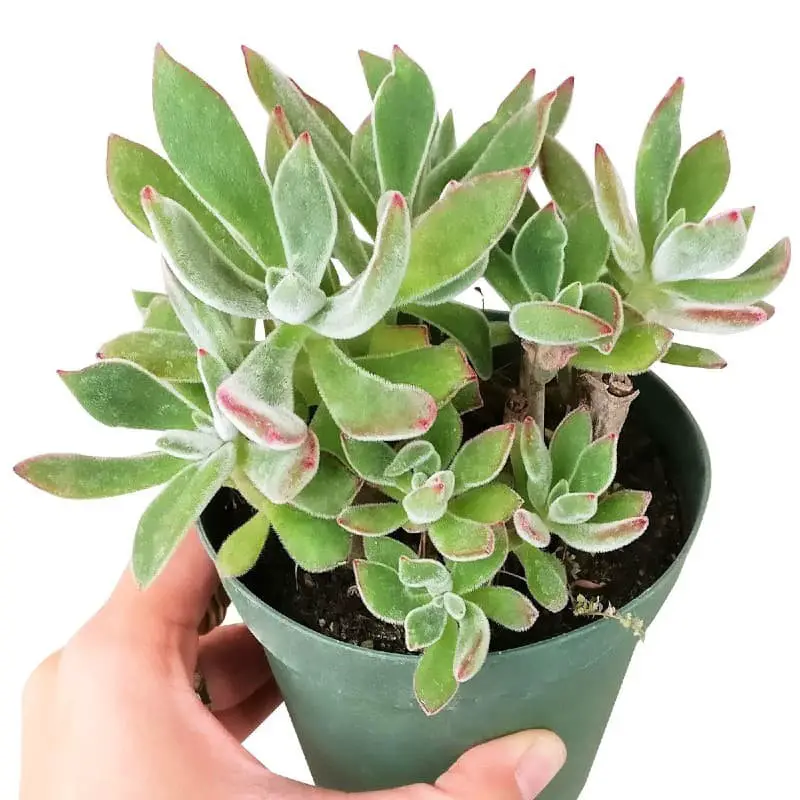
Native to Mexico, Echeveria harmsii is a flowering plant species within the Crassulaceae family. This succulent stands out for its unique features – it grows up to 30 centimeters in height and 60 centimeters in width, with rosettes of fleshy, spoon-shaped leaves that can reach up to 15 centimeters in length. Its evergreen nature adds an extra layer of charm, making it a popular choice among succulent enthusiasts.
Echeveria lauii.
In the world of succulents, Echeveria lauii stands out as a unique and captivating species. Native to Mexico, this evergreen plant boasts vibrant blue-green leaves that perfectly complement its stunning pink flowers. When it comes to cultivation, Echeveria lauii is renowned for its low-maintenance requirements, making it an ideal choice for both indoor and outdoor enthusiasts.
Not only does it thrive under a variety of growing conditions, but it can also be easily propagated through stem cuttings, ensuring that this gorgeous plant can be shared with others. Its adaptability and striking appearance have solidified Echeveria lauii as a popular houseplant and garden addition.
Echeveria leucotricha (Chenille Plant).
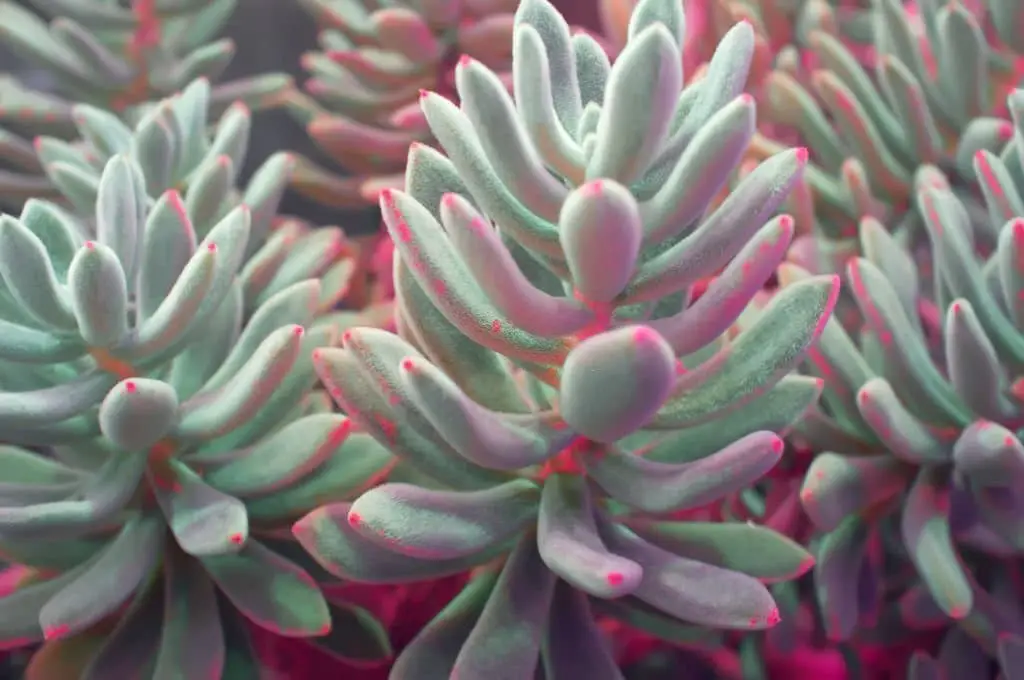
Echeveria leucotricha, a succulent native to Mexico, boasts an endearing characteristic – its leaves are covered in white hairs, giving it a delightfully fuzzy appearance. As the summer months arrive, this plant transforms into a vibrant display of yellow blooms. Perhaps what’s most impressive is its low-maintenance nature, requiring minimal water to thrive, making it an excellent choice for even the busiest gardeners.
Echeveria lilacina (Ghost Echeveria).
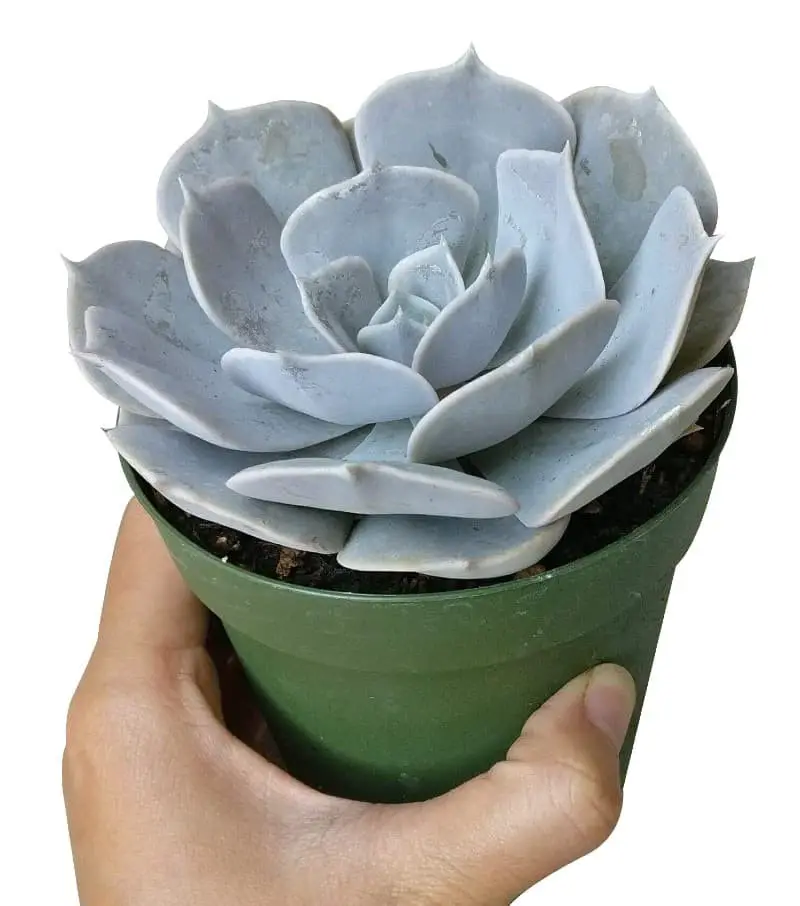
Discover the beauty of Echeveria lilacina, a stunning succulent native to Mexico and part of the Crassulaceae family. This lovely plant shares similarities with its close relative, Echeveria gibbiflora, and boasts a striking rosette shape that can grow up to 12 inches in diameter. The pale green leaves with a subtle purple hue and waxy texture are truly eye-catching. In the springtime, delicate pink flowers bloom, adding an extra layer of charm to this already captivating plant.
As a beginner-friendly succulent, Echeveria lilacina is remarkably easy to care for and can thrive in drought-prone conditions. While it excels in full sun, it can also tolerate partial shade, making it adaptable to various environments. To keep your Echeveria lilacina happy and healthy, be sure to provide well-draining soil and allow the soil to dry out completely between waterings. With its low-maintenance requirements and unique charm, this succulent is a great addition to any collection.
Echeveria minima.
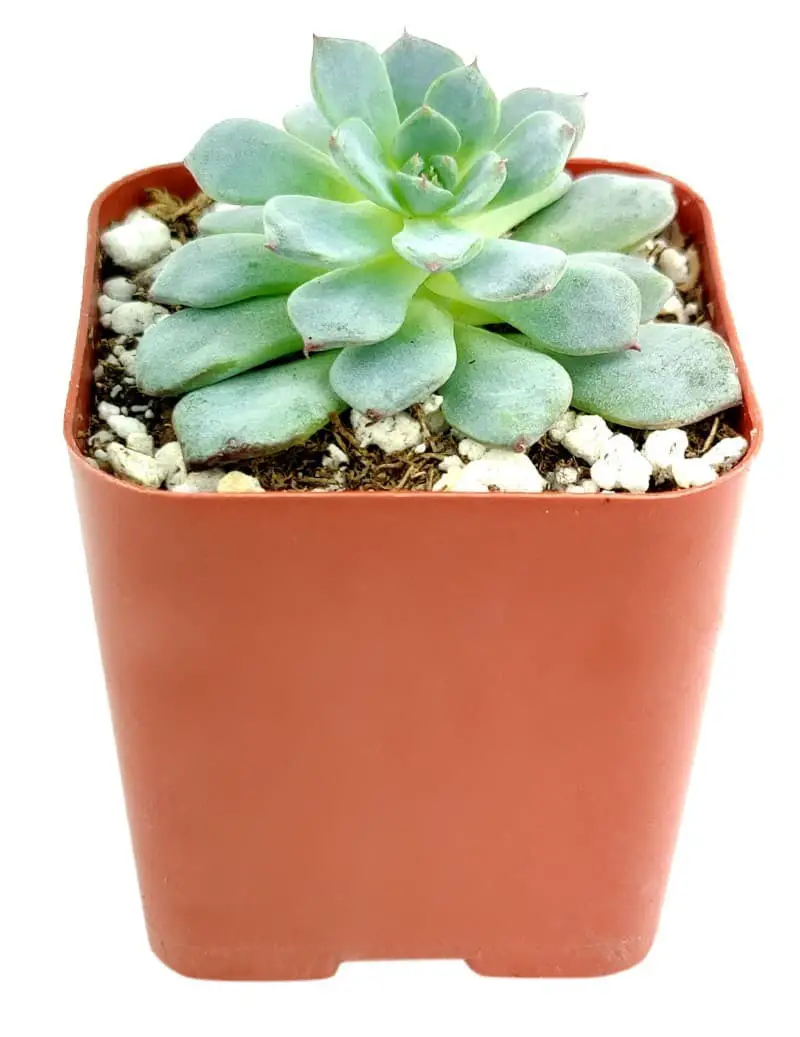
The Echeveria minima, a compact evergreen succulent belonging to the stonecrop family Crassulaceae, originates from Mexico. Its small blue-green leaves and vibrant pink flowers make it an attractive addition to any collection. This plant grows in rosettes, reaching up to 12 cm (12 in) in diameter. When grown in well-drained soil, Echeveria minima proves remarkably drought-tolerant and adaptable to partial shade. Propagation occurs through offsets or stem cuttings.
With its low-maintenance requirements, this succulent is an excellent choice for those new to plant care or seeking a reliable, easy-to-grow specimen.
Echeveria ‘Neon Breakers’.

In the world of succulents, few plants have captured hearts quite like Echeveria ‘Neon Breakers’. Native to Mexico, this stunning specimen boasts thick, fleshy leaves with a unique green hue and vibrant red tips. When summer rolls around, it rewards growers with a cascade of pink blooms. With its rugged adaptability and low-maintenance requirements, Echeveria ‘Neon Breakers’ has quickly become a go-to choice for both novice and seasoned enthusiasts alike.
Echeveria nodulosa (Painted Echeveria).

Discover the allure of Echeveria nodulosa, a striking succulent hailing from Mexico. Its vibrant leaves and distinctive rosette shape make it an exceptional addition to any succulent enthusiast’s collection. For those seeking something new and exciting, this plant is sure to impress. Echeveria nodulosa thrives in bright, indirect light, although it can also tolerate some direct sunlight. Crucially, its soil must be well-draining to prevent waterlogged conditions.
When watering, allow the soil to fully dry out before providing a thorough soaking.
Echeveria peacockii (Peacock Echeveria).
Echeveria peacockii, a stunning succulent, boasts blue-green leaves that form a striking rosette pattern. Reaching heights of up to 30 cm, this plant is a visual treat. Its vibrant flowers, showcasing shades of pink and white, burst forth in the spring. Native to Mexico’s rocky outcroppings, where it thrives amidst the rugged terrain, Echeveria peacockii gets its name from the majestic tail-like blooms that evoke the majesty of a peacock.
This succulent has won over many gardeners and container enthusiasts alike with its low-maintenance requirements and ability to survive on minimal watering.
Echeveria ‘Perle von Nurnberg’.

Echeveria ‘Perle von Nurnberg’ is a stunning succulent that has garnered popularity worldwide. Originating from Mexico, this succulent was first introduced to Europe in Germany’s city of Nuremberg, thus earning its name ‘pearl of Nuremberg’. Its long, slender leaves are striking, featuring a beautiful green and white striped pattern. The rosette-shaped arrangement of the leaves allows the plant to grow up to 12 inches tall.
With its natural ability to thrive in dry conditions, Echeveria ‘Perle von Nurnberg’ is remarkably drought-tolerant, requiring minimal watering. Watering once a week and allowing the soil to fully dry between sessions is an ideal care routine for this succulent. Additionally, its low-maintenance nature makes it relatively easy to care for. Propagation through leaf cuttings also presents an accessible way to share this beauty with others.
Echeveria purpusorum.
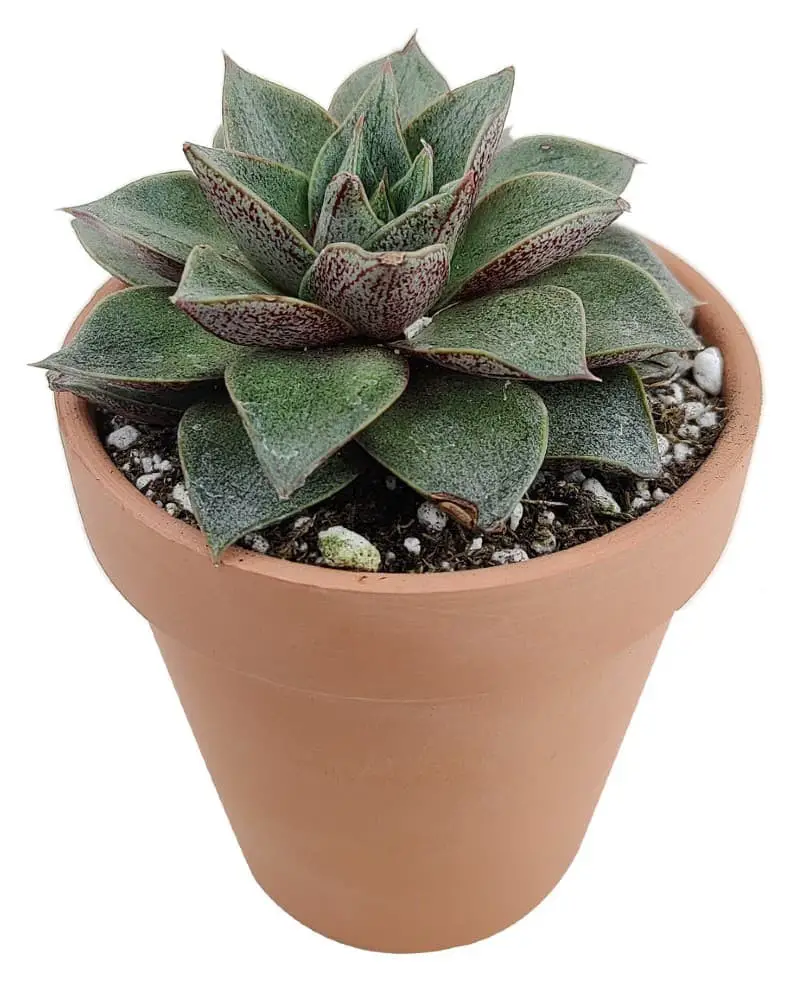
The Echeveria purpusorum species boasts a range of characteristics that make it a sought-after succulent among plant enthusiasts. Native to Mexico, this stemless or short-stemmed succulent forms rosettes with fleshy, purple-grey leaves that are triangular in shape and feature slightly toothed margins. The pink flowers that bloom on short stalks add an extra layer of visual appeal.
While Echeveria purpusorum can thrive in both indoor and outdoor environments, it does have some specific needs to flourish. It prefers a sunny location with well-drained soil, making it an ideal choice for gardeners who want a low-maintenance yet eye-catching addition to their landscape. With its unique foliage, this succulent is sure to draw attention and add a pop of color to any outdoor space.
Echeveria runyonii ‘Topsy Turvy’.
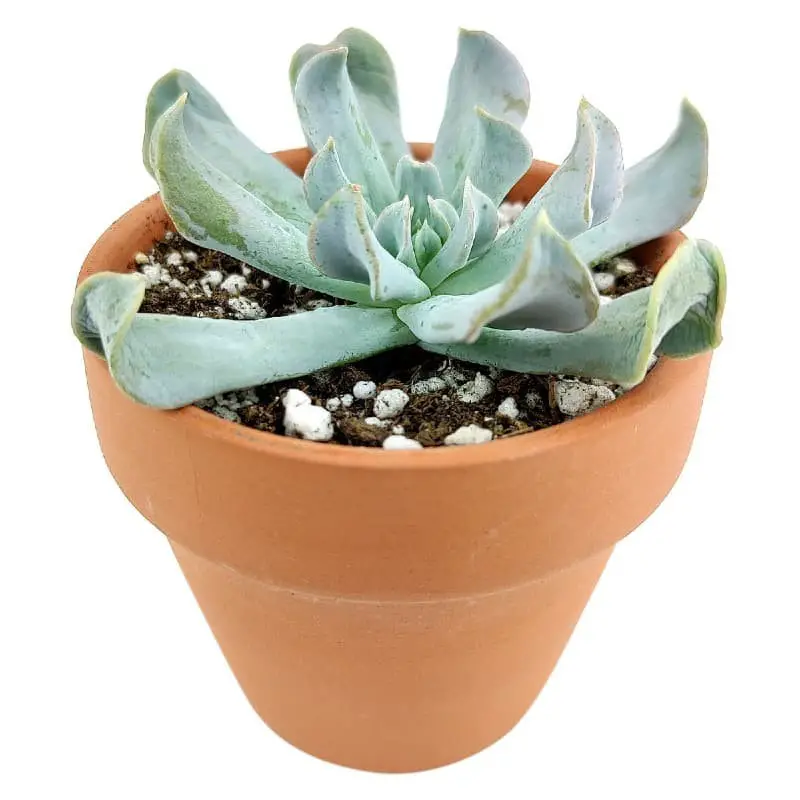
Echeveria runyonii ‘Topsy Turvy’ is a standout succulent species hailing from Mexico. Its foliage boasts an intriguing combination of green and white stripes, accompanied by a wavy, ruffled texture that adds to its visual appeal. When in bloom during the summer months, this succulent produces vibrant pink flowers.
With its adaptability to indoor or outdoor settings and forgiving nature when it comes to care, Echeveria runyonii ‘Topsy Turvy’ is an excellent choice for those seeking a stylish yet low-fuss addition to their space.
Echeveria ‘Ruth Jane’.
Echeveria ‘Ruth Jane’ stands out for its striking combination of green leaves and pink tips. As a hybrid of Echeveria ‘Perle von Nurnberg’ and Echeveria ‘Afterglow’, this plant owes its existence to Ruth Jane Michie, the first person to successfully cultivate it. A sun-loving species, Echeveria ‘Ruth Jane’ thrives in bright, indirect light and tends towards dryness, making it best suited for infrequent watering when the soil is completely parched.
Moreover, since this plant is not cold hardy, it should be brought indoors if temperatures dip below 50 degrees Fahrenheit to ensure its survival.
Echeveria secunda (glaucous echeveria).
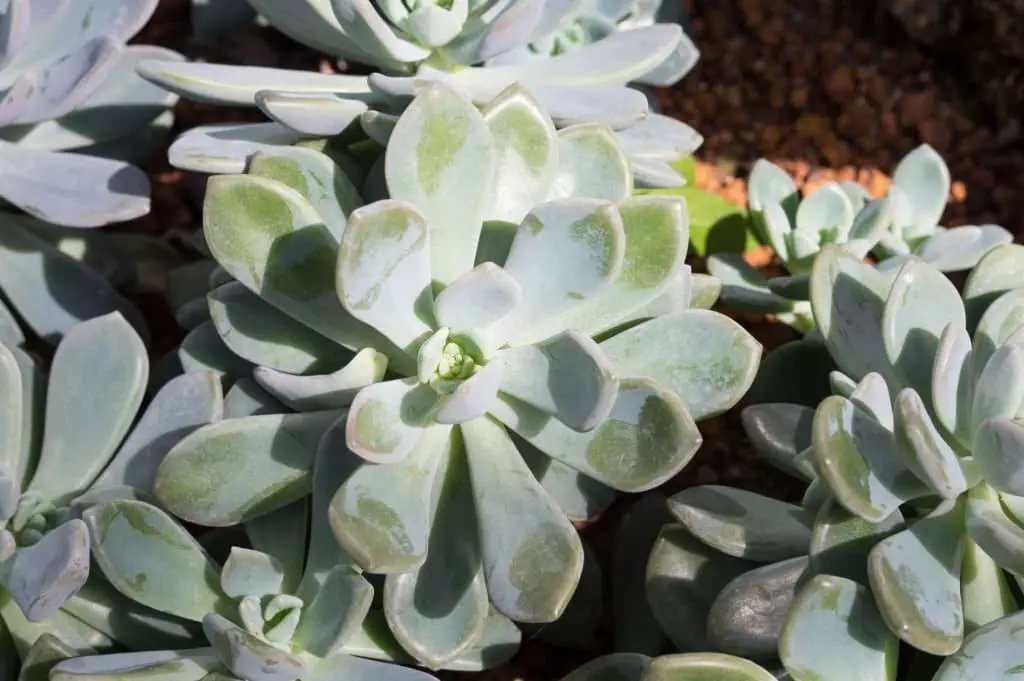
The Echeveria secunda species of flowering plant, native to Mexico, boasts a unique set of characteristics that make it an attractive addition to any garden or landscape. As a succulent, this plant can grow up to 30 cm (12 in) tall and 60 cm (24 in) wide, with its blue-green, oval-shaped leaves reaching lengths of up to 12 cm (0.47 ft). The vibrant yellow, orange, or red flowers that bloom from late winter to early spring only add to the plant’s visual appeal.
Notably, Echeveria secunda is a low-maintenance option, as it can tolerate drought and some frost. Its popularity stems from its ease of propagation via stem cuttings or offsets, making it an ideal choice for containers, gardens, and landscapes alike.
Echeveria secunda ‘Azulita’.
Echeveria secunda ‘Azulita’ is a stunning blue-green succulent that originates from Mexico. While it’s a relatively slow-growing variety, it can still reach impressive dimensions of up to 12 inches in diameter. Characterized by thick, fleshy leaves and vibrant pink or white blooms, this plant is an excellent choice for container gardens or as a lush groundcover in areas with full sun to partial shade.
Notably, ‘Azulita’ is remarkably resilient to heat and drought conditions, requiring minimal watering once it’s established. This charming succulent is also commonly referred to as ‘Bluebell’ or ‘Mexican Bells’, making it an attractive addition to any outdoor space.
Echeveria setosa (Mexican Firecracker).
From the arid landscapes of Mexico, Echeveria setosa brings its unique charm to succulent enthusiasts. This striking plant boasts an upright growth habit, with some specimens reaching heights of up to 12 inches (30 cm). Its most distinctive feature is the vibrant coloration of its leaves, which feature green undertones and bold red tips and margins – a characteristic that has earned it the whimsical moniker ‘Mexican Firecracker’.
When spring or summer arrives, Echeveria setosa rewards with bright yellow blooms. With its low-maintenance requirements and adaptability to both garden and indoor environments, it’s no wonder this succulent has become a popular choice for plant enthusiasts of all levels.
Echeveria shaviana (Mexican Hens).
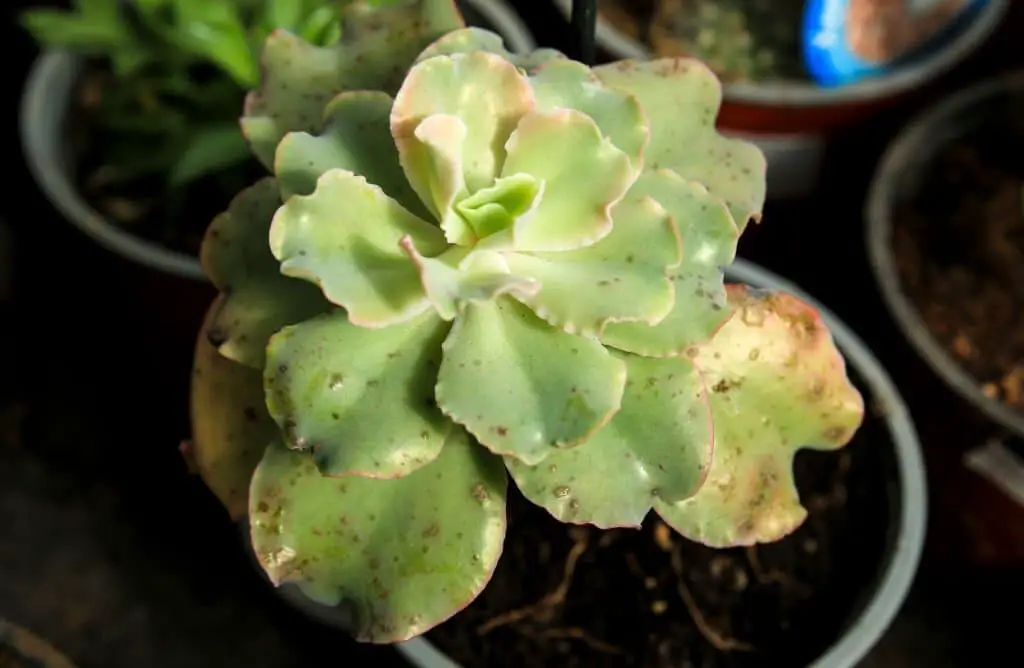
Echeveria shaviana, a member of the Crassulaceae family, originates from Mexico. This species of flowering plant boasts an impressive stature, growing up to 30-40 cm (12-16 inches) tall and wide. During the summer months, it produces vibrant yellow flowers, adding a pop of color to its surroundings. The leaves of Echeveria shaviana are characterized by their spoon-shaped design, featuring striking red margins and tips that often display subtle pink or purple hues.
Each rosette can reach an impressive width of up to 20 cm (12 inches). As one of the most sought-after succulent species, Echeveria shaviana is prized for its stunning foliage and low-maintenance requirements. As a result, it’s commonly used as a houseplant or incorporated into gardens in warm climates, where its unique beauty can thrive.
Echeveria subrigida.
In the world of succulents, few species capture the eye like Echeveria subrigida. Native to Mexico, this stunning plant is part of the Crassulaceae family, a group that also includes popular succulent varieties such as Sedum and Kalanchoe. Characterized by its rosette growth pattern, Echeveria subrigida can grow up to 12 inches in diameter, making it a striking addition to any indoor or outdoor space.
The plant’s leaves are a unique blend of blue-green hues with subtle pink undertones, further enhanced by the fine white hairs that cover their surface. When spring arrives, Echeveria subrigida is treated to a burst of sunshine as its bright yellow flowers bloom, adding an extra layer of visual appeal.
Echeveria ‘Sunburst’.
Echeveria ‘Sunburst’ is a stunning succulent that brings a pop of color to any garden setting. Hailing from Mexico, this Crassulaceae family member boasts a unique appearance, with leaves featuring vibrant green hues and striking yellow margins, topped off by a bold red tip. When in bloom, the plant’s bright orange flowers add an extra layer of visual appeal, typically emerging during the warm summer months.
Echeveria ‘Tippy’.
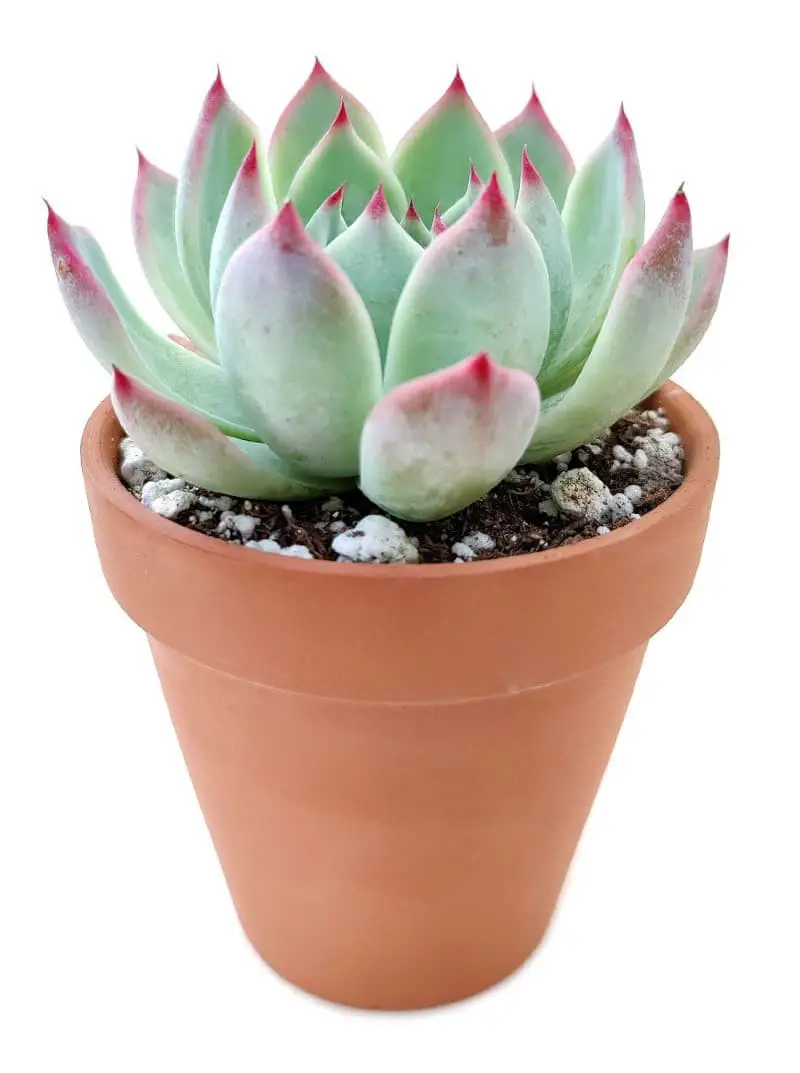
Indulge your senses with Echeveria ‘Tippy’, a stunning succulent boasting delicate light pink flowers. Hailing from Mexico, this Crassulaceae family member boasts vibrant green leaves with a striking red edging and can grow up to 12 inches tall. What’s more, it’s an ideal choice for novice gardeners, thriving in well-drained soil and tolerating moderate sunlight. If you’re seeking a low-maintenance yet visually appealing succulent, Echeveria ‘Tippy’ is the perfect pick!
FAQs
How many varieties of Echeveria are there?
Native to the Americas, the Echeveria genus comprises approximately 150 succulent species that boast a distinct rosette shape. Characterized by their compact growth habits, these plants can vary significantly in terms of size, ranging from mere centimeters to sprawling meters across, showcasing the remarkable adaptability and diversity within this succulent family.
Is Echeveria full sun?
While Echeveria succulents can thrive in full sun, it’s essential to consider their sensitivity to extreme heat. If you reside in a region with scorching summers, provide some afternoon shade to shield the leaves from intense sunlight. This precaution ensures the plant remains healthy and vibrant.
As succulents, Echeveria require minimal watering, making them perfect for busy gardeners or those who tend to forget to water their plants.
However, it’s crucial not to overwater, as this can be detrimental to the plant’s well-being. Instead, wait until the soil feels dry to the touch and then water sparingly. Be sure to allow the soil to drain thoroughly before repotting, ensuring your Echeveria remains happy and thriving.
What is the largest Echeveria?
Echeverias are highly sought-after ornamental plants, often utilized in landscaping and indoor settings as houseplants. Their low-maintenance nature has contributed to their widespread popularity. The largest of these succulent beauties is the Echeveria gigantea, which can span up to three meters in diameter, making it a truly impressive sight. Native to Mexico’s mountainous regions, this evergreen plant boasts large, fleshy leaves that are characteristic of its succulent nature.
Drought-tolerant and adaptable to both full sun and partial shade, the Echeveria gigantea is an ideal choice for gardeners looking to add a unique touch to their outdoor or indoor spaces. Its ability to retain its foliage year-round only adds to its appeal, making it a reliable choice for those seeking a long-lasting ornamental plant.
Conclusion
With this overview of the most popular Echeveria types, it’s clear that these succulents offer a stunning array of shapes, sizes, and hues. Whether you’re seeking a compact addition to your collection or a showstopping centerpiece, there’s an Echeveria variety that’s sure to captivate. So why not embark on a journey of discovery and uncover the perfect Echeveria for your unique needs? The world is waiting!
Related Posts
When it comes to succulent enthusiasts, there’s nothing quite like the allure of a well-cared-for String of Pearls plant. But for those who are still learning the ropes, it can be frustrating when their Peperomia Graveolens ‘Ruby Glow’ or Rhipsalis cereuscula (Coral Cactus) succulents start to decline. To avoid this common problem, it’s essential to understand how to properly grow and care for these unique plants.
In fact, simply planting them in containers without drainage can be a recipe for disaster. That’s why we’ve put together some expert tips on how to keep your Pleiospilos Nelii ‘Split Rock’ thriving.





